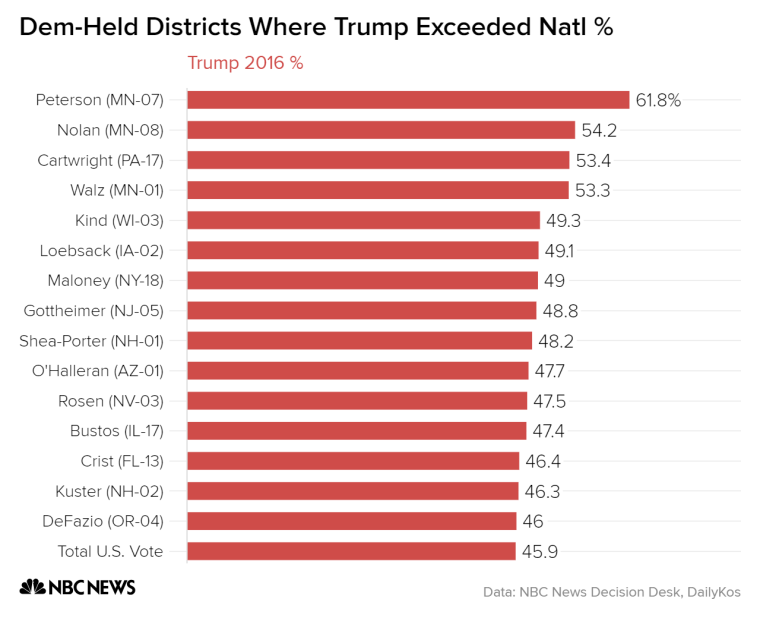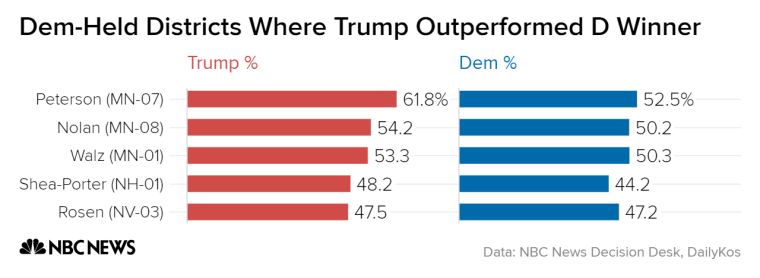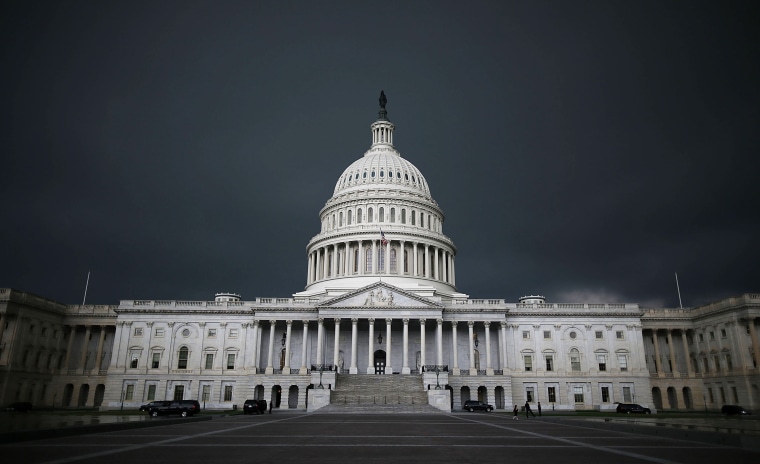President Donald Trump told a bipartisan group of Senators Tuesday night that he's confident a health care deal will get done despite last week's collapse of the House Republican effort to repeal and replace the Affordable Care Act.
"I know that we're all going to make a deal on health care, that's such an easy one," Trump said.
Other Republicans, and some Democrats in Washington have likewise talked about the possibility of a bipartisan deal on health care. White House Press Secretary Sean Spicer Wednesday suggested the president was poking a little fun at the hard work of legislating but the question remains — does the rarest of Capitol Hill creatures — the Trump-friendly Democrat — actually exist?
The data suggest such votes would likely be hard to find.
Any hope of building a working centrist coalition made of like-minded Republicans and Democrats would depend upon locating some Democrats willing to work with the president, and there look to be some major hurdles in that regard.
Related: Trump Vows Deal on Health Care, House GOP Says Let’s Try
Let’s start with the most basic issue. Donald Trump is not a popular president right now. His approval rating is not at 50 percent in any poll and most surveys have him mired between the high 30s and low 40s. Those are not good numbers to build any coalition, never mind one that that would go against the hyper-partisan atmosphere the currently prevails in Washington.
And remember, Trump himself added to that atmosphere by not reaching out to Democrats on his plan to repeal and replace the Affordable Care Act and then blaming Democrats when the House GOP leadership had to pull the bill from consideration on Friday when it became clear it would not pass.
But leaving all that aside, what is the potential for spotting a sizable pack of Trump Democrats on Hill sometime in the near future?
Start With 15
There are 15 Democrat-held U.S. House districts where Trump got a greater percentage of the vote than he received nationally, 45.9 percent. So this group of districts could be thought of as the broadest measure of Trump districts.

Or Drop the Number to 12
A more cautious estimate of potential Trump Democrats might be 12. That’s the number of Democrat-held districts where Trump won the presidential vote.
For the sitting Democratic representative in the other three districts — Florida 13, New Hampshire 2 and Oregon 4 — there could still be great political danger in supporting Trump, who is a remarkably divisive figure. Granted, the presidential vote in those districts was very close (Democrat Hillary Clinton won by 3.5 points or less in all of them) but the larger point is the numbers don’t suggest there is a compelling interest in backing Trump.
Or Drop the Number Again to 5
The real test for a House member may be the percentage he or she got compared to Trump in 2016. Using this strict test, there are only five districts where Trump did better than the Democrat who won the seat.

There are three in Minnesota — the 1st, 7th and 8th districts — plus Nevada’s 3rd district and New Hampshire’s 1st. These five districts are arguably the core of the Trump Democrat group, places where Trump appears to be stronger than the sitting representative.
It's hard to imagine the White House would see a benefit in moving to the center on policy and strategy to pick up five votes. And even if the herd of Trump Democrats is bigger, such as the 15 districts where Trump did better than he did nationally, it’s not a big gain.
In order to make a real a difference in Trump’s House tally and build a sustainable coalition, he would likely have to reach a larger group of Democrats. To do that, he would probably need to move more dramatically to the center on policy.
And, of course, actions have reactions. A pivot to the center could in turn push away other House Republicans who feared a backlash in their home districts, particularly in strongly conservative districts. The nation’s partisan divide is deep and potent.
When you look at the math and the possible action and reactions, you begin to understand why building a centrist coalition would be so difficult for the White House.
The numbers suggest there aren’t a lot of potential Trump-friendly Democrats wandering around Washington. And trying to create a herd of them would likely create another set of problems for Team Trump.
